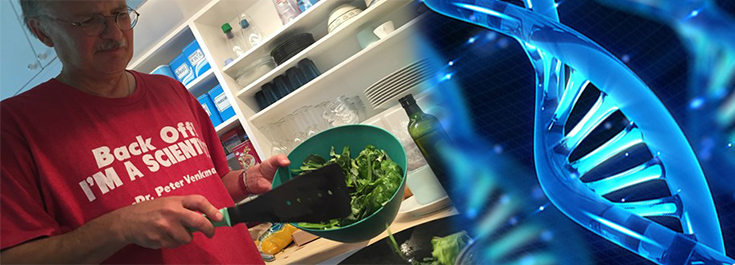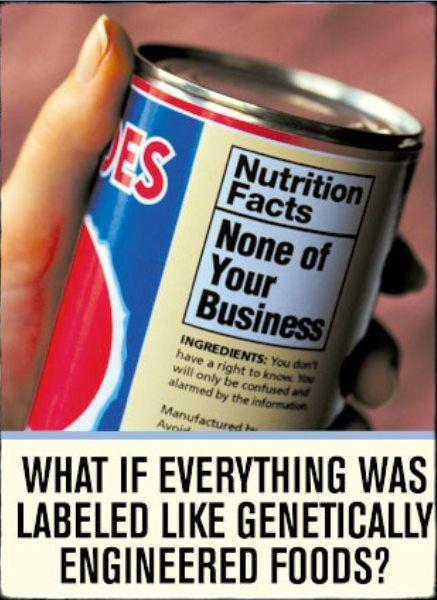Scientist ‘Makes History’ by Eating 1st-Ever CRISPR Gene-Edited Meal
Scientist ‘Makes History’ by Eating 1st-Ever CRISPR Gene-Edited Meal
Are we headed down a dangerous path?
A lot of people are willing to spend a few extra bucks to buy organic produce and antibiotic-free meat these days, while others aren’t too worried about eating foods made with genetically modified ingredients or sprayed with pesticides. Well, it seems that scientists recently made history when they served up – and ate – the first full-meal consisting of genetically engineered food using CRISPR technology.
The Down-Low on the GMO Grub
A Swedish plant scientist from Umeå University, Stefan Jansson cultivated, grew, and ate a cabbage plant that had its genome edited with CRISPR-Cas9 . His meal consisted of a pasta dish that included 300 grams of the cabbage he grew from GM seeds modified with CRISPR . The pasta was made with gene-edited grains . [2]
Jansson chowed down with Gustaf Klarin, host of a Radio Sweden gardening show, which broadcast the “event”in early September.
Jannson wrote in a blog entry on 16 August, the actual day that the Frankenfood (a term sometimes used to refer to GMO foods) might have actually been consumed:
“To our delight—and to some extent to my surprise—the meal turned out really nice. Both of us ate with great relish. Gustaf even though the cabbage was the best tasting vegetable on the plate. And I agreed.”
The seeds were not created in Jansson’s lab, but came from a colleague in another country who didn’t wish to be identified .
Highly Risky High-Science
The purpose of gene-editing in agriculture is to make crops healthier, more visually appealing, to give them a longer shelf-life, and to make them taste better. Ideally, this would help feed a world in which the population is exploding while resources are dwindling.
That sounds great, in theory, but in the wrong hands, CRISPR could be used for what some would deem nefarious purposes, like driving a harmful gene through a country’s food crops . Bioterrorism is a very real threat worldwide. [3]
Gene-editing has also been applied to disease-spreading mosquitoes . In the fall of 2015, it was reported that scientists at the University of California had created a new strain of mosquito designed to eradicate malaria .
The mosquitoes carry extra genes for antibodies that block the development of the Plasmodium parasite that causes malaria within the insect, thus preventing the insects from transmitting the disease to people when they feed on human blood. The mosquitoes proved to be more than 99% effective.
That’s wonderful news, but again, it doesn’t come without risks . As The Independent reportedlast November:
“Scientists and environmentalists fear that releasing GM mosquitoes into the population could “amplify the frequency of synthetic genes within a natural population of breeding insects poses the risks of ‘unintended consequences’ if safety concerns are not addressed.”
And when mosquitoes designed to wipe out dengue fever were released in Brazil some years ago, they ended up spreading dengue even further by reducing immunity to a more serious form of the disease .
You Could Be Eating GMOs…and not Know it
In the United States, the Food and Drug Administration (FDA) allowed a type of genetically modified mushroom to sidestep agency regulations by categorizing it as non-GMO because nothing was added to it , genetically. Foods are only considered “GMO” if they’ve had something added to their DNA. The GM mushroom, which turns brown less quickly than regular mushrooms, was created by altering 2 letters of its DNA code .
( Science likes to pointout that mushrooms are fungi, not plants, but it doesn’t really matter when you’re slicing them up on a salad, does it?)
Under this regulation, Americans may very well wind up eating genetically modified foods that are labeled non-GMO .
GMOs are defined the same way in Sweden, and because of that, said Jansson, the scientists did “not need to ask for a permit or even inform [Swedish health regulators].”
Veggies Today, Babies Tomorrow?
CRISPR gene-editing is not limited to crops. Earlier this year, a panel of U.S. scientists and ethicists gave approval to a fertility treatment requiring 3 genetic parents. You read that correctly – babies are no longer limited to 2 parents .
The controversial fertility method has been hailed as a breakthrough for couples who can’t have children, but it also takes us 1 step closer to scientists being able to create “designer babies,” in which parents can genetically “build” their future child like a Mr. Potato Head, deleting undesirable traits and replacing them with better ones. This would give select humans a genetic – and unfair – advantage over others .
| About Julie Fidler: | |
| Julie Fidler is a freelance writer, legal blogger, and the author of Adventures in Holy Matrimony: For Better or the Absolute Worst. She lives in Pennsylvania with her husband and two ridiculously spoiled cats. She occasionally pontificates onher blog. | |
Other Popular Stories:


Post a Comment